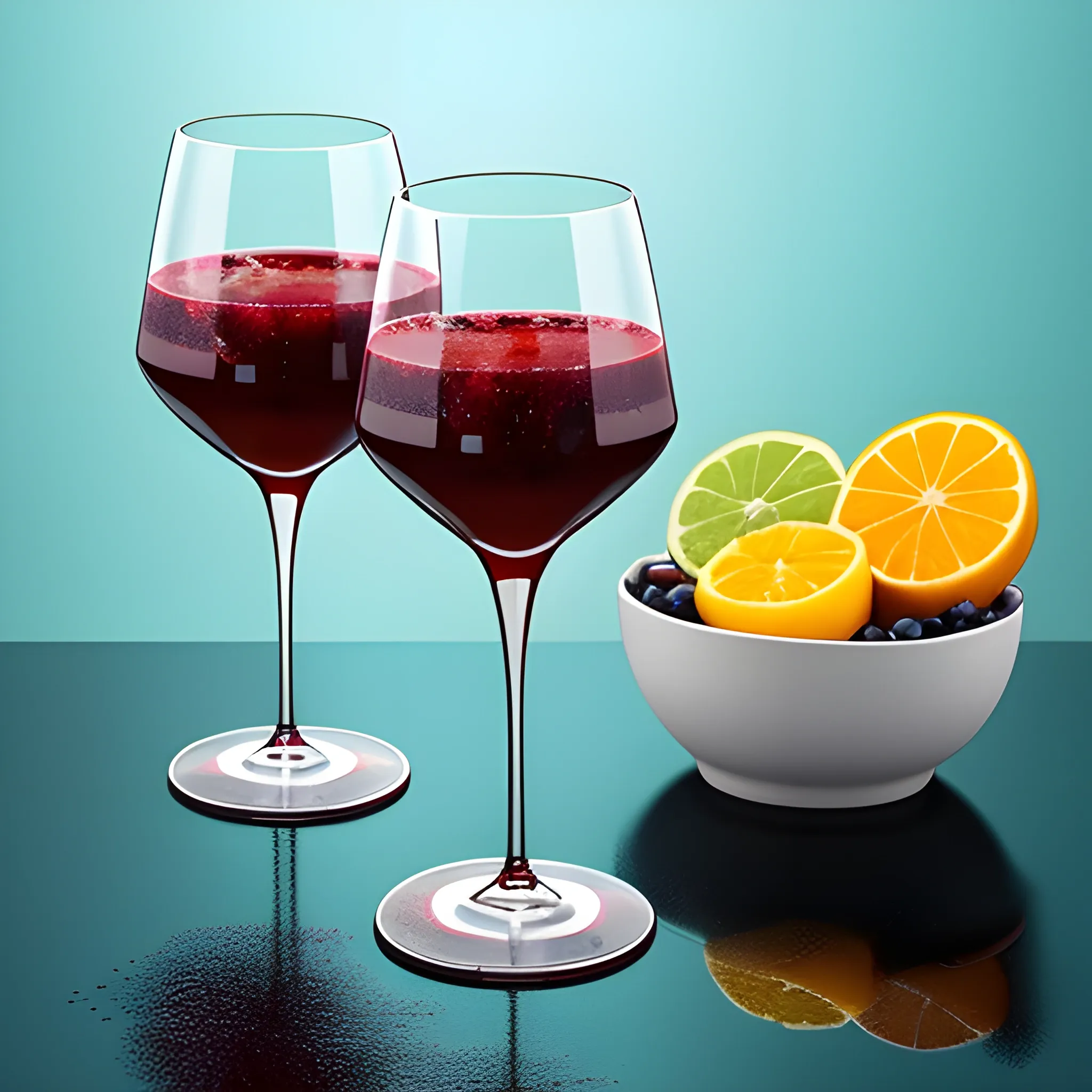1. Start with a blank canvas or a background color that represents the base of the image. 2. Use va

1. Start with a blank canvas or a background color that represents the base of the image. 2. Use various shades of red to depict the rich color of red wine. Experiment with different brush sizes and opacities to create depth and texture. 3. Add elements like wine glasses , a pitcher , or a wine bottle to symbolize the sangria. Consider using a reference image or sketch to ensure accuracy. 4. Incorporate fruit slices such as oranges , lemons , or berries floating in the wine. Use vibrant colors and pay attention to their placement to create an appealing composition. 5. Include ice cubes or crushed ice to convey the refreshing aspect of sangria. Use light blue or white tones to depict the ice. 6. Consider adding a subtle background pattern or texture to enhance the overall visual appeal. It could be something like a watercolor wash or a faint geometric pattern. 7. Pay attention to lighting and shadows. Add highlights and reflections to the glassware and fruits to make them appear more three-dimensional. 8. Fine-tune the details and make any necessary adjustments to achieve the desired result. 9. Finally , step back and evaluate the overall composition. Make any additional changes or refinements to complete your representation of red wine sangria. ,
{ "seed": "3306150239", "steps": 30, "width": 512, "height": 512, "version": "SH_Deliberate", "sampler_name": "k_dpm_2", "guidance_scale": 7.5 }
Created on: 7/3/2023, 4:29:55 AM